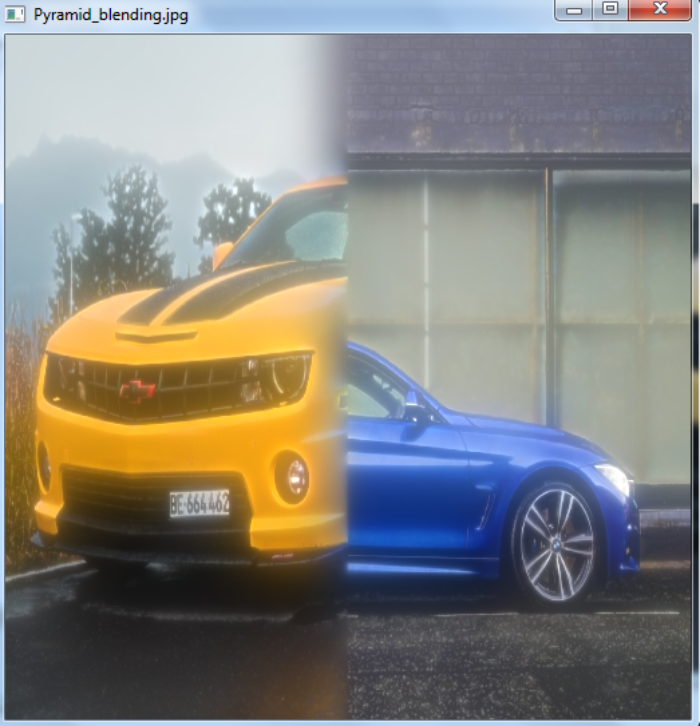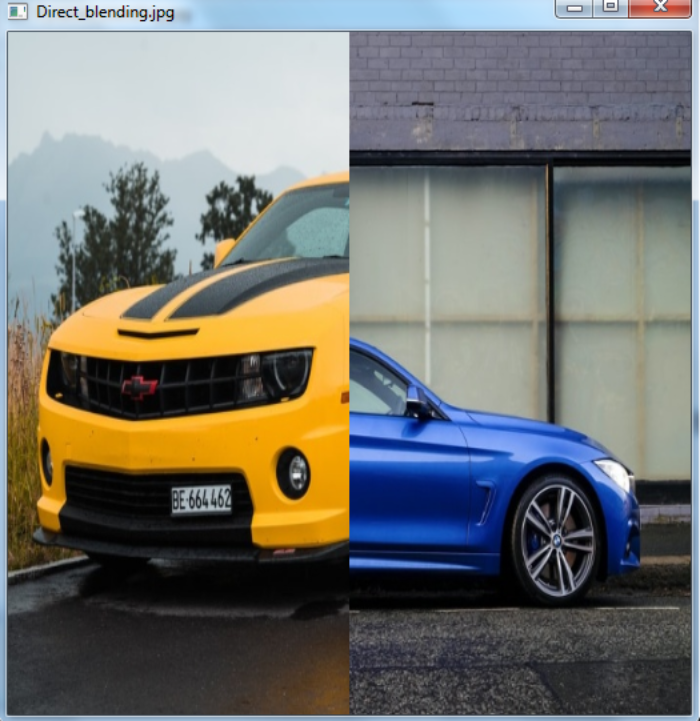
 Data Structure
Data Structure Networking
Networking RDBMS
RDBMS Operating System
Operating System Java
Java MS Excel
MS Excel iOS
iOS HTML
HTML CSS
CSS Android
Android Python
Python C Programming
C Programming C++
C++ C#
C# MongoDB
MongoDB MySQL
MySQL Javascript
Javascript PHP
PHP
- Selected Reading
- UPSC IAS Exams Notes
- Developer's Best Practices
- Questions and Answers
- Effective Resume Writing
- HR Interview Questions
- Computer Glossary
- Who is Who
How to blend images using image pyramids in OpenCV Python?
We can blend the images using the Gaussian and Laplacian image pyramids. The Gaussian pyramid is a type of image pyramid. To create a Gaussian pyramid, OpenCV provides us two functions cv2.pyrDown() and cv2.pyrUp(). We can form the Laplacian Pyramids from the Gaussian pyramids. In Laplacian pyramid images look like edge images only. A level in the Laplacian Pyramid is formed by the difference between that level in the Gaussian Pyramid and the expanded version of its upper level in the Gaussian Pyramid.
Steps
To blend images using image pyramids, we could follow the steps given below ?
Import the required libraries OpenCV and NumPy. Make sure you have already installed them.
Read two input images A and B using cv2.imread() method. Specify the full image path. Resize the images to a size (512,512).
Generate the Gaussian pyramids for both input images A and B.
Using the Gaussian pyramids, generate the Laplacian pyramids for both input images A and B.
Add the left half of the first image and right half of the second image in each level of Laplacian pyramids.
Blend and reconstruct the image. Display the blended image
Let's have a look at some examples for more clear understanding.
Input Images
We will use the following images as the input files in the example below.


Example
In this example, we blend two input images using the image pyramid.
import cv2 import numpy as np,sys A = cv2.imread('car.jpg') B = cv2.imread('blue-car.jpg') A = cv2.resize(A, (512, 512)) B = cv2.resize(B, (512, 512)) # generate Gaussian pyramid for A G = A.copy() gpA = [G] for i in range(6): G = cv2.pyrDown(G) gpA.append(G) # generate Gaussian pyramid for B G = B.copy() gpB = [G] for i in range(6): G = cv2.pyrDown(G) gpB.append(G) # generate Laplacian Pyramid for A lpA = [gpA[5]] for i in range(5,0,-1): GE = cv2.pyrUp(gpA[i]) L = cv2.subtract(gpA[i-1],GE) lpA.append(L) # generate Laplacian Pyramid for B lpB = [gpB[5]] for i in range(5,0,-1): GE = cv2.pyrUp(gpB[i]) L = cv2.subtract(gpB[i-1],GE) lpB.append(L) # Now add left and right halves of images in each level LS = [] for la,lb in zip(lpA,lpB): rows,cols,dpt = la.shape ls = np.hstack((la[:,0:cols//2], lb[:,cols//2:])) LS.append(ls) # now reconstruct ls_ = LS[0] for i in range(1,6): ls_ = cv2.pyrUp(ls_) ls_ = cv2.add(ls_, LS[i]) # image with direct connecting each half real = np.hstack((A[:,:cols//2],B[:,cols//2:])) cv2.imshow('Pyramid_blending.jpg',ls_) cv2.waitKey(0) cv2.imshow('Direct_blending.jpg',real) cv2.waitKey(0) cv2.destroyAllWindows()
Output
The above program, when executed, will produce the following two output windows ?


The first window shows image blending using the image pyramid and the second shows the direct image blending. Notice the difference between the above two images.

